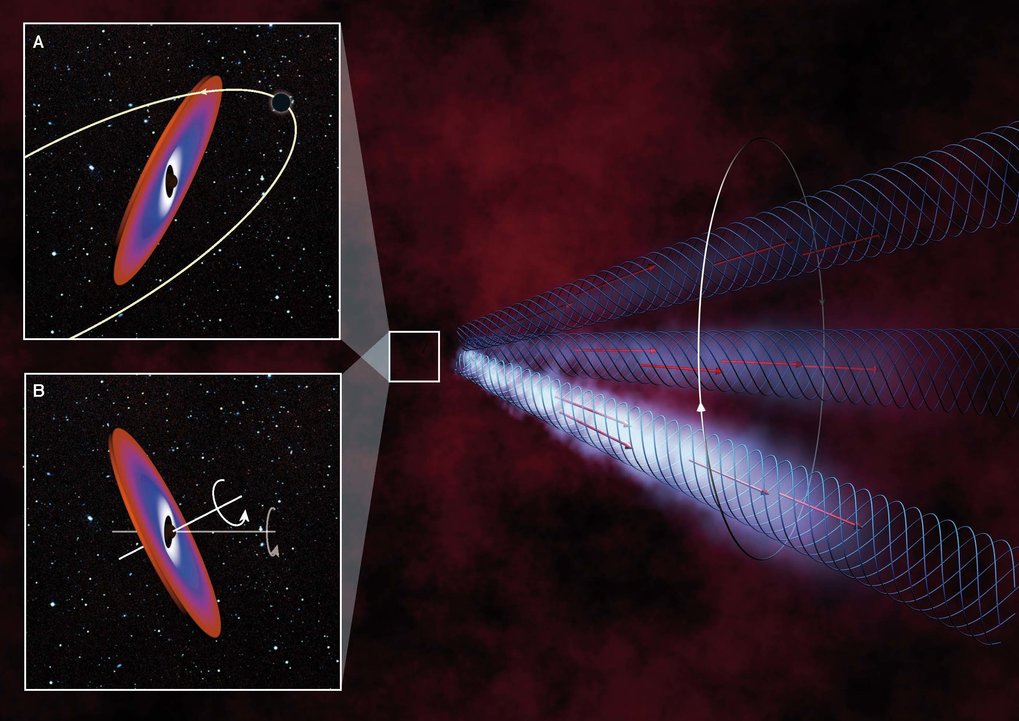Max Planck Institute for Radio Astronomy | 2018 Jun 21
A radio jet of a supermassive black hole has been investigated in so far unprecedented detail
A galaxy with at least one active supermassive black hole – named OJ 287 – has caused many irritations and questions in the past. The emitted radiation of this object spans a wide range – from the radio up to the highest energies in the TeV regime. The potential periodicity in the variable optical emission made this galaxy a candidate for hosting a supermassive binary black hole in its centre. The object was thus labeled a Rosetta stone of active galactic nuclei expressing the hope that this object could be a prototypical object and once deciphered, could explain fundamental properties of active black holes in general. Now an international team of astronomers led by Max Planck researchers has discovered that the active galactic nucleus of OJ 287 generates a smoothly precessing jet on a timescale of about 22 years. The precession of the jet observed could also explain the variability in the radiation of the galaxy. This detection solves many riddles at once and provides a key to understanding variability in active galactic nuclei. ...
The well-known galaxy OJ 287 at a distance of about 3.5 billion light years harbors at least one supermassive black hole weighing Millions to Billions of solar masses. The supermassive black hole is active and produces a jet – a plasma stream which originates in the central nuclear region of galaxies in the vicinity of the central black hole. This jet is observable at radio wavelengths. The galaxy is also a well-known target to optical astronomers. The brightness fluctuations of this galaxy in the optical regime are legendary and have been observed since the late 19th century, providing one of the longest light-curves in astronomy.
However, despite decades of radio observations of many jet sources and many sophisticated studies, jets remained enigmatic. Traditionally, the origin of the jet brightness variations observed at radio wavelengths was attributed to the jet feeding mechanism by the central black hole system. On the other hand, the observed moving features in the jets - called knots - were attributed to shocks traveling in the jet. Researchers looked for a connection between both phenomena but this could not be done consistently so far. ...
OJ287: Deciphering the 'Rosetta Stone of Blazars' - S Britzen et al
- Monthly Notices of the RAS 478(3):3199 (Aug 2018) DOI: 10.1093/mnras/sty1026
